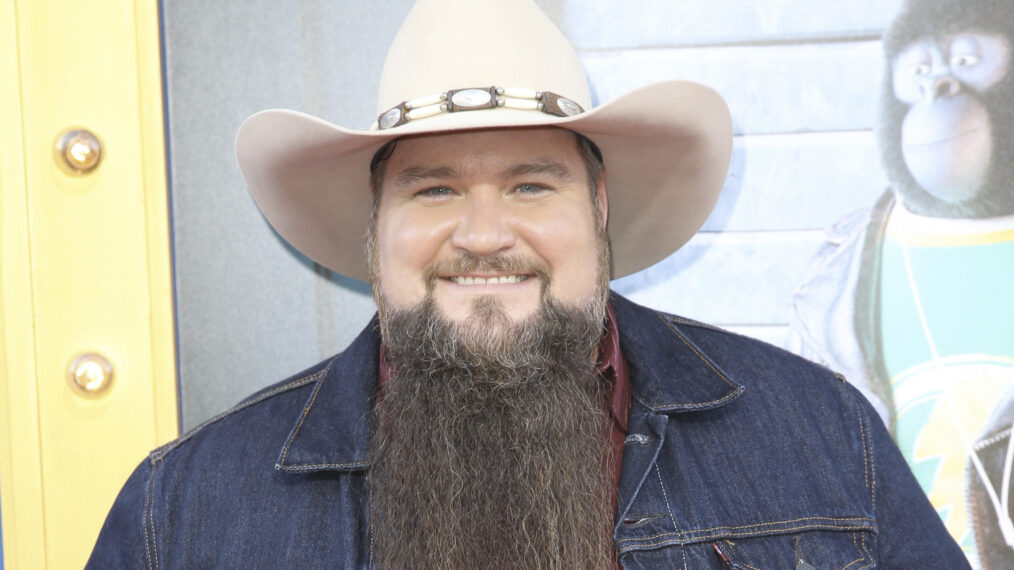The death of Vicente Fernández at 81 years old in 2021 marked the end of a golden era of Mexican ranchera music that lasted almost a century and was immortalized in both film and music by larger than life stars like José Alfredo Jiménez, Javier Solís, Antonio Aguilar and Fernández’s idol, Pedro Infante.
Now, Fernández’s lasting legacy not only in Mexico but throughout the entire Spanish speaking universe, is receiving a further boost with De Rey a Rey, the album and tour by his also superstar son, Alejandro Fernández, performing songs from his father’s vast recorded catalog.
Last weekend, Alejandro Fernández kicked of the De Rey a Rey Tour with two sold out shows at Mexico City’s Plaza de México, where he performed nearly 30 songs made famous by his father decades ago. The repertoire, ranging from beloved standards like “El Rey” to chart hits like “Estos Celos,” ran the gamut of Vicente’s long career and the universal appeal of his themes: love, honor and respect.
Alejandro also sang songs from his own extensive repertoire, which straddles contemporary pop and ballads as well as traditional Mexican music, but as he often does — and like his father, he wore his signature charro outfit.
“I’ve had the good fortune of being born with two great blessings: I was born Mexican, and I was born a Fernández,” Alejandro told the crowd. “Today, we’re celebrating the life of the great Mexican charro as he would have liked: Singing his songs. Viva Vicente Fernández! Viva music and tequila! Viva México!”
Alejandro will continue De Rey a Rey with shows in Mexico Nov. 2 and 7, and will relaunch his tour through Mexico and 27 U.S. cities in early 2025.
Meantime, Billboard’s Latin and Billboard Español editors have ranked all the Vicente Fernández songs currently on the show’s set list. From “El Rey” to “A Mi Manera,” here are the Vicente Fernández songs you will hear soon in Alejandro Fernández’s voice.
-
“De Un Rancho a Otro”
This song thrives on Chente’s signature style, showcasing his unique voice accompanied by trumpets with soaring notes and the rustic sounds of acoustic guitar. It narrates the story of two loves, where sighs can be felt across great distances, or “From One Ranch to Another.” As Vicente expresses, along this path lies his deep love, illustrated through the distinctive operatic range of his melodies.
-
“Los Mandados”
A classic for undocumented migrants, “Los Mandados” tells the story of a “mojado” who tries to cross the border from Mexico to the U.S. again and again but continues to be caught by the migra. “I know all the lines, roads, rivers and canals,” say part of the lyrics. “From Tijuana to Reynosa, from Matamoros to Juárez.” Written by Jorge Lerma, the song, in Chente’s powerful compelling and voice, is part of his 1977 album A Pesar de Todo.
-
“El Cantador”
A devoted man of el rancho, one of Chente’s earlier hits from the ‘70s was “El Cantador.” A song he dedicated to a horse he had of the same name— ”a foal with more spirit than any other horse,” he chanted in the song. “My horse was beautiful/ He was my most faithful friend/ As light as lightning/ He was of very good character.”
-
“Las Botas de Charro”
Fernández was always a romantic soul, and 1977’s “Las Botas de Charro” is proof of that. In the song, the hopeless romantic sings about a girl he’s always liked but she liked older men, and not the younger, inexperienced boys like him. “What nerve I had with myself/ I didn’t have a mustache/ I didn’t carry a gun/ I didn’t ride a horse […] I walked barefoot/ And you liked the charro boots,” he sings, also expressing in the lyrics that he would go to the bar and drink out of disappointment.
-
“Mi Amigo El Tordillo”
The opening track to Chente’s album, Mi Amigo El Tordillo, the song sets the tone for 10 tracks that are, for the most part, dedicated to his beloved horses. “Mi Amigo El Tordillo” is a giddy ranchera where he describes his faithful tordillo (horse with a mixture of white and black hair) and his strong galloping skills: “My Tordillo was understanding/ And I wouldn’t change him for anything,” he sings.
-
“El Tahúr”
Released in 1976, and the opening track to the album of the same name, “El Tahúr” tells the story of Martín Estrada Contreras, a professional gambler who was robbed and betrayed by a rich man named Raúl. Because of its passionate storytelling, the three-minute song can easily give off a dramatic telenovela scene. “For me, gambling debts/ Are always debts of honor/ I beat you,” Fernandez sings on the track.
-
“Mi Ranchito”
Vicente Fernández always said, proudly, that he was a cowboy and a man of his ranch. “Mi Ranchito,” written by Felipe Valdés Leal and performed by many ranchero singers, speaks of the longing for that land combined with a lost love. Fernández recorded the song in 1977, and although it was not one of his biggest hits, it gained new life in the 1985 film El Embustero.
-
“Bohemio de Afición”
With beautiful mariachi instrumentation loaded with violins, requintos and brass, this song written by Martín Urieta is a sincere warning from a Don Juan to a young and innocent lady. “Stay away from me, I am of no use to you… Unfaithful in love, I bring it from my ancestry,” Fernández sings with aplomb. Included on his 1998 album Entre el Amor y Yo, “Bohemio de Afición” reached No. 2 on the Billboard’s Regional Mexican Airplay chart.
-
“El Hijo del Pueblo”
Originally penned by José Alfredo Jiménez, “El Hijo del Pueblo” finds Chente singing about being a humble person from the town. In the track he admits that he has no money, he likes to drink, but that he has a big heart and that being Mexican is his greatest fortune. “But how many millionaires/ Would like to live my life/ To sing to poverty/ Without feeling any pain,” he said in the lyrics. “El Hijo del Pueblo” also gave life to the 1974 movie starring Vicente Fernandez and Lucia Mendez.
-
“Ni En Defensa Propia”
A classic Vicente song that emphasizes the importance of maintaining dignity in certain circumstances, although the heart does not understand it. It is a poetic expression by a gentleman who highlights the significance of self-love.
-
“No Me Hagas Menos”
In this sad ranchera ballad, Fernández begs a love not to leave him, warning her that she won’t be able to forget him either. “Don’t make less of me, don’t go away, don’t despise me, don’t do me wrong/ Because I love you, because I adore you, because I die in my loneliness,” he sings with pathos and devotion over a simple guitar riff, accompanied by brass and violins. Written by Leonardo Yañez “El Nano”, the song appears on Fernández’s 1967 album Hijo del Pueblo.
-
“Voy a Navegar”
From the album Arriba Huentitán (1972), this song composed by Chucho Martínez Gil is the perfect setting to show off to the fullest the glorious and powerful voice of a great mariachi singer. Full of heartbreak, it laments the loss of a love forever.
-
“Que Te Vaya Bonito”
Opening with a melancholy, steely-string guitar, this classic lovelorn ballad weaves a tale of farewell and resigned well-wishing. With Vicente Fernández’s emotive vocals at the forefront, the song becomes a poignant anthem of grace in letting go, imbued with the deep sentimentality of ranchera music.
-
“Estos Celos”
This light and quick track, accentuated by stops and rhythmic changes, was written by the great Joan Sebastian and recorded by Fernández in 2007. It was a huge hit, reaching No. 3 on Billboard’s Hot Latin Songs chart in 2007, and No. 1 on the Regional Mexican Airplay chart, a position it kept for 10 weeks. It also won Best Regional Mexican Song at the 2008 Latin Grammys.
-
“La Derrota”
Listening to the voice of Joan Sebastian as he begins with the intro “Ahí te va Chente,” a song he composed, sets the tone for what is to come. The song explores the theme of betrayal and the lessons that come from it. It narrates a story of regret, revealing how failing to think clearly has caused his true love to suffer. With harmonies that resonate like tears, his voice showcases a deep understanding of the country roots of ranchero music.
-
“Me Voy a Quitar de En Medio”
Fernández’s songs boast of intricate musical arrangements with every single instrument paying a different role in the song. “Me Voy a Quitar de En Medio” is no exception. Resembling almost a gorgeous orchestral waltz, here he sings about heartbreak, as he often did. “Let me be with you, even if I’m not by your side,” he pleads. But ultimately, declares he’s removing himself from the situation.
-
“A Mi Manera”
The song was originally composed by French singer Claude François and adapted into English by Paul Anka in 1969. In 1983, Fernández, known as the “Charro de Huentitán,” released a Spanish version that showcased his unique style. The powerful lyrics take the listener on a journey through life from an introspective perspective, beautifully conveyed through his voice, making it one of his most celebrated hits.
-
“Un Millón de Primaveras”
This song evolves into a heartfelt serenade of sadness and farewell, staying true to Vicente’s style. Its lyrics express the melancholy of having to let go of a love that cannot be maintained. To forget this love, one might need “Un Millón de Primaveras” (A Million Springs), or perhaps it’s something that can never be forgotten. Released in 2007, this track is part of the album Para Siempre, which was produced and written by his longtime friend, the legendary Joan Sebastian.
-
“Qué de Raro Tiene”
Exploring the timeless trope of defiant love, “Qué de Raro Tiene” captures the essence of loving without boundaries or societal approval. El Charro de Huentitán delivers each line with heartfelt robustness, his powerful voice embracing the ordinary magic found in authentic connections while celebrating “the beautiful face and goddess-like body” of his beloved. This song resonates with those who cherish unorthodox relationships and honors the simple elegance of love.
-
“Nos Estorbó la Ropa”
This song vividly captures the fiery intimacy of a spontaneous romantic encounter. The lyrics recount a chilly evening transformed by fervent love, with clothing falling away as both metaphor and reality. This ranchera evokes the feeling of the cool air of night with the warmth of passion, turning winter into spring through the heat of the moment.
-
“Las Llaves de mi Alma”
-
“No Me Sé Rajar”
This danceable ranchera was part of the soundtrack of the film Juan Charrasqueado y Gabino Barrera (1982), where Fernández sings it as a serenade for the girlfriend from whom he is kept away. For those used to Vicente’s big, heartbreak songs, this one is the complete opposite: light, fun, with a lively rhythm under guitars, trumpets and tuba. But the lyrics, like so much of Fernández, are full of drama (“Today they admonished me for coming to see you/ They say that if I return I will find death”). It would become one of Fernánez’s most emblematic songs, included in several of his albums.
-
“La Ley del Monte”
This ranchera may not be as universal as “El Rey” or “Volver, Volver,” but it’s one of Fernández’s most memorable songs. Recorded in the late 60s, and part of El Hijo del Pueblo album, this song captures the zeitgeist of rancho culture as the legendary Fernández sings about two lovers who went to the mountaintop to ink their love on a maguey plant. “I recorded your name on a maguey plant, next to mine like proof that we were there, in love,” he sings to a danceable tune.
-
“De Qué Manera Te Olvido?”
Powered by the elegance of mariachi instrumentation, this song, released in the ’70s, has stood the test of time. Matching the song’s somber tone, Fernández sings emotionally about not being able to forget a past love. His rendition is moving, convincing the listener that he’s quite broken. “How do I forget you? How can I bury this cursed love that torments my heart?” he wails.
-
“Lástima Que Seas Ajena”
In this soft ranchera ballad, Fernández’s powerful and sweet voice shines as he sings about a forbidden love that will never be his. “It’s a shame that you’re somebody else’s and I can’t give you the best I have/ It’s a shame that I am late and I don’t have the key to open your body,” he sings in the chorus. The song, written by Jorge Massías, gives the title to Chente’s 1993 album, which reached No. 5 on Regional Mexican Albums, and spent a total of 37 weeks on the chart.
-
“Por Tu Maldito Amor”
In the throes of a self-pitying rampage, this piercing ballad plunges into the soul’s abyss, ravaged by unrequited love. “¡Por tuuuuu maldiiiiitoooo amor!,” Chente laments, each word laden with unfathomable despair. This timeless song vividly illustrates the torment of feeling metaphorically buried alive, (“¡Y ya pa’ qué quiero la tumba si ya me enterraste en vida!,” he wails). It’s a brutally devastating anthem for anyone ensnared in the consuming agony of unreturned romance.
-
“Hermoso Cariño”
There’s something magical about this song, and I’m not sure if it’s because of the contrast of the wailing instruments with the song’s bright lyrics, or, Fernández’s evocative delivery. Maybe it’s all of it. A staple Vicente Fernández song, “Hermoso Cariño” is ultimately a fan favorite. Some may argue it’s his best one. The delicate yet striking trumpet notes at the top of the song instantly stir up strong emotions — because, after all, this is a love song that can be dedicated to your significant other, or even your child. “Beautiful love, I am like a kid with a new toy, content and happy … Beautiful love that God has sent only for me,” Fernández sings.
-
“Mujeres Divinas”
“Mujeres Divinas” poetically applauds the enigma and grace of women, blending traditional reverence with musical finesse. It begins with a delicate guitar melody, accompanied by beautiful trumpet lines weaving seamlessly through precisely timed strums and the striking vihuela roll. This classic song bolsters its narrative with rich instrumentation that accentuates the emotive power of its sincere verses.
-
“Volver, Volver”
This song has been covered by multiple artists throughout the years, and is perhaps one of the most well-known Spanish-language songs around the world. It’s relatable lyrics and earworm chorus, about returning to a loved one, are passionately sung by Fernández, who, along with his mariachi, inject pathos to this global hit song. “Return, return, to your arms again, I will get to where you are, I know how to lose, I know how to lose, I want to return, return, return.”
-
“Acá Entre Nos”
In “Acá Entre Nos,” Vicente Fernández’s voice becomes a vessel for profound heartbreak, weaving through lush, sorrowful arrangements of violins and swoon-worthy trumpet riffs. Chente declares: “¡No cabe duda que también de dolor se canta!” with palpable, gut-wrenching honesty, transforming pain into art while exposing the raw underbelly of romantic despair. This iconic song not only showcases his undisputed vocal prowess but also solidifies its status as a timeless masterpiece of emotional catharsis, resonating deeply with anyone who has known love’s sharp sting.
-
“El Rey”
It’s difficult to imagine a Mexican (or Latin American) celebration that doesn’t play the classic “El Rey.” The quintessential ranchera, written by José Alfredo Jiménez and released in 1971, has crossed generations and borders, becoming one of the best-known songs in the Spanish repertoire globally. Who wouldn’t know the lyrics “Con dinero y sin dinero, hago siempre lo que quiero, y mi palabra es la ley/ No tengo trono ni reina, ni nadie que me comprenda, pero sigo siendo el rey”? (“With and without money, I always do what I want, and my word is the law/ I have no throne or queen, nor anyone who understands me, but I am still the king.”)
The song has been performed by a long list of singers and bands from all over Latin America and Spain — from Jiménez himself, to Pedro Vargas and María Victoria, to Luis Miguel, Maná, Andrés Calamaro and Plácido Domingo. But it was the voice of the great Vicente Fernández that made it an international classic. The song has been so linked to Chente that the Caracol and Netflix series about his life bears its name in the title: El Rey, Vicente Fernández. And, without a doubt, Fernández is still the king.








































:quality(85):upscale()/2024/11/15/946/n/1922564/27581e706737c03acbcbf7.30261735_.png)






























